Science fiction is a genre that’s popular with millions of people across the globe and that’s because it brings us to the place that is way more interesting than the real life. And the big part of that are the characters and the storylines, of course, but another interesting part is the ‘out of this world’ futuristic technology that’s in the story.
But a lot of people never stop to check whether some of this technology might actually exist in real world. And believe it or not, some of them actually really exist.
This list is all about popular sci-fi technology that isn’t so fictional at all.
10 – Bionics
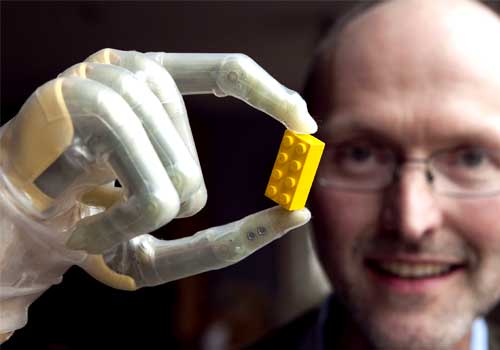
Remember the Luke Skywalker’s bionic arms in star wars? Now that technology really does exist.
The high-tech whizzes at DARPA, the military research arm of the Defense Department, displayed some breakthrough technology for space, ocean, robotics and ground war at a Congressional Tech Showcase in Washington. The most inspiring tech was an innovation underway for America’s veterans who return home with upper limb loss.
A tragic cost of war is that many service members are missing limbs when they come home from combat. The U.S. military is working harder than ever to replace them with prosthetics that work just like the real thing. The Johns Hopkins Applied Physics Lab Modular Prosthetic artificial limb, part of DARPA’s Revolutionizing Prosthetics Program, is among the most sophisticated arms ever made.
The artificial limb moves like the real thing, and it can do just about everything. Built over the course of five years, it makes it possible to play the piano, toss a ball, pick up a cup and sip some coffee from it.
The ultimate goal is to give back natural hand movement.
The prosthetic weighs about as much as a human arm and looks pretty close to the real thing – except this arm is made of metal.
And just like a human arm, it’s directed by the brain.
9 – Powered Armour
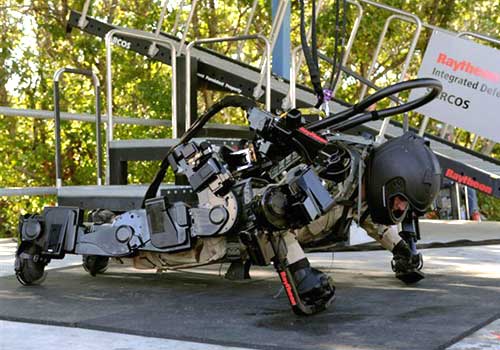
Powered exoskeleton technology, for those who are a fan of Alien Movies, has been around for a while now – but have been used purely to enhanced human endurance and strength not to fly or shoot weaponry (Not until Now).
Exoskeleton suit is a mobile machine consisting primarily of an outer framework worn by a person, and powered by a system of motors or hydraulics that delivers at least part of the energy for limb movement.
The main function of a powered exoskeleton is to assist the wearer by boosting their strength and endurance. They are commonly designed for military use, to help soldiers carry heavy loads both in and out of combat.
In civilian areas, similar exoskeletons could be used to help fire-fighters and other rescue workers survive dangerous environments. The medical field is another prime area for exoskeleton technology, where it can be used for enhanced precision during surgery, or as an assist to allow nurses to move heavy patients.
As hinted by President Obama earlier this year, America is in fact building a real life iron man suit. But further details are unknown as of the moment – its top secret. Unlike the movie, this suit probably takes a long time to take on or off. So the practical question would be what happens when the real life Iron man is called by nature (If you know what I mean).
8 – The Password Pill

If you hated interring passwords then this technology is for you – that’s if you’re not the easily-freak-out type of guy. Motorola developed an edible authentication vitamin pill that once swallowed turns you into a living-breathing human password capable of unlocking all your devices.
How does it work? After you swallowing the pill, the digestive liquid in your stomach activates it. Once activated, the pill starts emitting 18bit signal from your stomach that strong enough to be detected by computers and smart phones unlocking them.
The interesting part is that, although Motorola has no immediate plans to release this to the public – it is FDA approved which means it could be seen in the market anytime.
7 – 3D Printing Technology
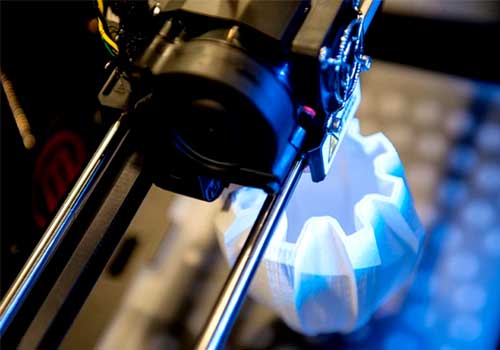
3D printing or additive manufacturing is a process of making three dimensional solid objects from a digital file. The creation of a 3D printed object is achieved using additive processes. In an additive process an object is created by laying down successive layers of material until the entire object is created. Each of these layers can be seen as a thinly sliced horizontal cross-section of the eventual object.
How does it work? It all starts with making a virtual design of the object you want to create. This virtual design is made in a CAD (Computer Aided Design) file using a 3D modeling program (for the creation of a totally new object) ór with the use of a 3D scanner (to copy an existing object). This scanner makes a 3D digital copy of an object and puts it into a 3D modeling program.
To prepare the digital file created in a 3D modeling program for printing, the software slices the final model into hundreds or thousands of horizontal layers. When this prepared file is uploaded in the 3D printer, the printer creates the object layer by layer. The 3D printer reads every slice (or 2D image) and proceeds to create the object blending each layer together with no sign of the layering visible, resulting in one three dimensional object.
(Source)
6 – Universal Translator

Similar to the idea of the universal translator from Star Trek, a real life universal translator really does exist. The SIGMO is a voice translating device that will revolutionise the way you are able to communicate and understand other languages.
It allows real-time translating of 25 languages. It has two modes of voice translation. You just simply set your native language, then the language to translate to.
By pressing the first button and speaking your phrase SIGMO in turn will instantly translate and pronounce it in a language you have selected. By pressing the second button, it will translate speech from the foreign language, then instantly speak in your native language.
(Source)
5 – Self Driving Cars

Google Self-Driving cars has been a reality for a while in California however they aren’t available for commercial use.
The Self-Driving Car is a project by Google that involves developing technology for autonomous cars, mainly electric cars. The software powering Google’s cars is called Google Chauffeur. Lettering on the side of each car identifies it as a “self-driving car”.
The project is currently being led by Google engineer Sebastian Thrun, former director of the Stanford Artificial Intelligence Laboratory and co-inventor of Google Street View. Thrun’s team at Stanford created the robotic vehicle Stanley which won the 2005 DARPA Grand Challenge and its US$2 million prize from the United States Department of Defense.
The team developing the system consisted of 15 engineers working for Google, including Chris Urmson, Mike Montemerlo, and Anthony Levandowski who had worked on the DARPA Grand and Urban Challenges.
Legislation has been passed in four states and the District of Columbia allowing driverless cars. The state of Nevada passed a law on June 2011, permitting the operation of autonomous cars in Nevada, after Google had been lobbying in that state for robotic car laws.
The Nevada law went into effect on March 2012, and the Nevada Department of Motor Vehicles issued the first license for an autonomous car in May 2012, to a Toyota Prius modified with Google’s experimental driverless technology.
In April 2012, Florida became the second state to allow the testing of autonomous cars on public roads, and California became the third when Governor Jerry Brown signed the bill into law at Google HQ in Mountain View.
In December 2013, Michigan became the fourth state to allow testing of driverless cars in public roads. In July 2014, the city of Coeur d’Alene, Idaho adopted a robotics ordinance that includes provisions to allow for self-driving cars.
On May 2014, Google presented a new prototype of their driverless car that had neither a steering wheel nor pedals.
4 – Bioluminescent light

The Yonder biology company has created something that looks like straight out of the movie Avatar – Dino Pet. Dino Pet is a container shape like a dinosaur that is full of bioluminescent algae.
How does it work? Basically the algae absorb light energy during the day and glow in the brilliant neon light during night.
What’s interesting is these algae always existed in the lagoons of Jamaica, but Yonder Biology Company are brilliant enough to turned it in something you can buy and make your house looks really cool.
(Source)
3 – Smart Contact Lenses
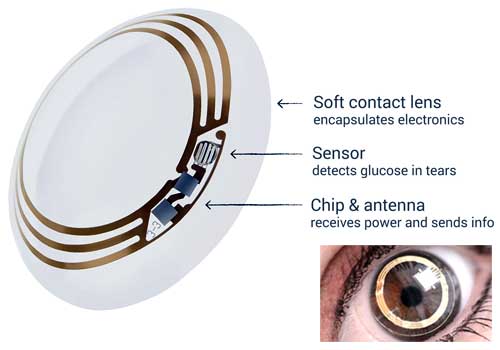
The closest thing in real life to achieve the age of bionics, Google develops a smart contact lenses which will be available to consumers in the next five years is a huge deal for diabetic patients who will no longer prick their fingers five to 10 times a day.
These lenses measure your glucose level by simply being in your eye and the really cool thing about this project is the potential application that can help the medical technology world. They already developed the computer wearable Google Glass – so it’s logical that in a matter of time they will merge the two technologies.
2 – Optical Camouflage

Optical Camouflage better known as the invisibility cloak [as seen on GI Joe and The Avengers Movies] doesn’t rely on magic [Harry Potter movies] but instead it is a very real technology that existed today. The way it works is by using augmented reality technology. It bends or adjusts around the material or subject making it appeared virtually invisible to anyone looking at them.
It doesn’t make you completely invisible like in the movies, but instead it gives you highly translucent look. It’s quite a complex process and the real life applications are still in beta test – but still it’s really cool.
(Source)
1 – Modumetal
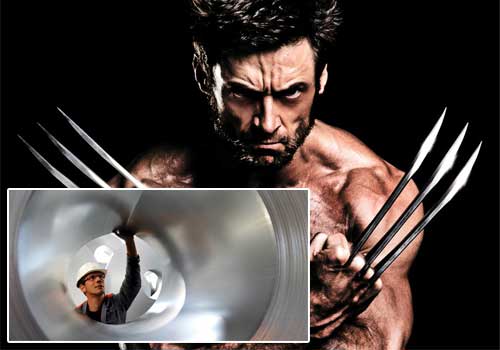
Modumetal is a revolutionary nanolaminated metal alloy that is stronger and lighter than steel and will replace conventional metals and composites in many applications, starting with military armor, and eventually in cars, planes, buildings, and other transportation and construction sectors.
It is the next generation in materials and represents a sea change in the historical material tradeoff between weight and performance.
The success of Modumetal will usher in a new generation of materials, allowing the manufacture of products that have only been hypothetical before now. Through its partnerships with powerhouses in transportation and construction industries, Modumetal will launch a revolution in nanotech metals.
(Source)
That’s all folks. Here’s an inspiring video about some insights to future technology:
